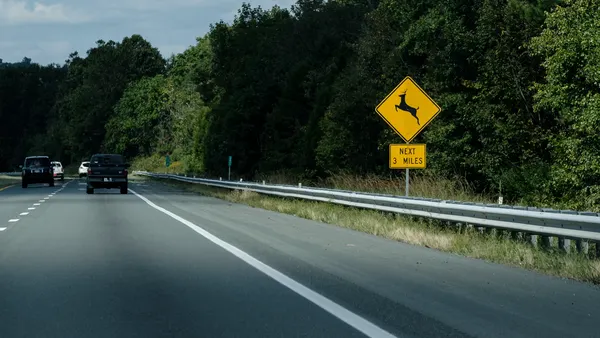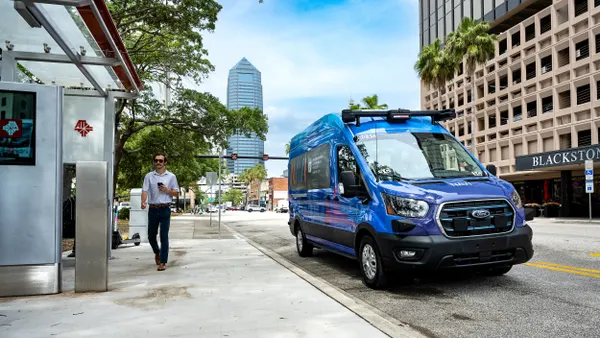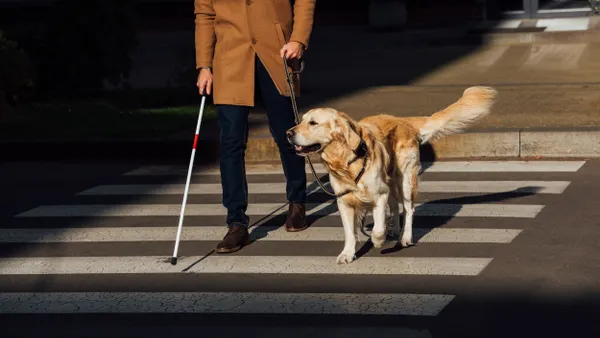Dive Brief:
- Pedestrian deaths in 2019 hit their highest rate since 1988, according to a new projection from the Governors Highway Safety Association (GHSA). Based on data from the first six months of the year, GHSA is projecting that 6,590 pedestrian fatalities occurred last year in the U.S., a 5% increase from 2018.
- The report found most pedestrian fatalities took place on local roads, at night and outside of intersections, which GHSA said shows "the need for safer road crossings and increased efforts to make pedestrians and vehicles more visible." Over the past decade, nighttime pedestrian fatalities have increased by 67%, compared to a 16% increase in daytime fatalities, according to the report.
- Unsafe driving behaviors such as speeding, distracted and drowsy driving are also to blame, GHSA said. The association noted that the number of pedestrian crashes involving an SUV has climbed by 81% over the past decade, while crashes involving passenger cars have seen a 53% increase.
Dive Insight:
The latest projections show a "complete reversal of progress" after 30 years of pedestrian deaths decreasing, report author Richard Retting said in a statement. He called for more to be done around pedestrian safety.
"Pedestrians are at an inherent disadvantage in collisions, and we must continue to take a broad approach to pedestrian safety," he said.
But GHSA noted there are some reasons for optimism, even in light of the seemingly inexorable climb in pedestrian fatalities. In the first half of 2019, GHSA said 20 states and Washington, DC saw declines in pedestrian fatalities compared to 2018. The association said there have also been sharp declines in deaths in some cities, which it said suggests state-level data "may obscure local success stories."
Cities have increasingly turned to Complete Streets projects and policies to make their streets safer. On a webinar last year, National Complete Streets Coalition (NCSC) Director Emiko Atherton said there were just 35 Complete Streets projects when the organization began tracking the policies in 2005; by the end of 2018 there were more than 1,400.
That effort has made strides toward becoming a national policy with the Complete Streets Act, introduced in Congress in July 2019.
But advocacy groups said more must be done. In a statement, the Insurance Institute for Highway Safety’s Chief Research Officer David Zuby called for more options for pedestrians to safely cross streets, as well as more speed cameras and better vehicle headlights. In the long-term, he called for better infrastructure and safety technologies nationwide.
"As the report points out, major roads often lack convenient and safe crossings, fast-moving vehicles make for more frequent and deadlier crashes, and dimly lit roads compound the dangers at night," Zuby said.











